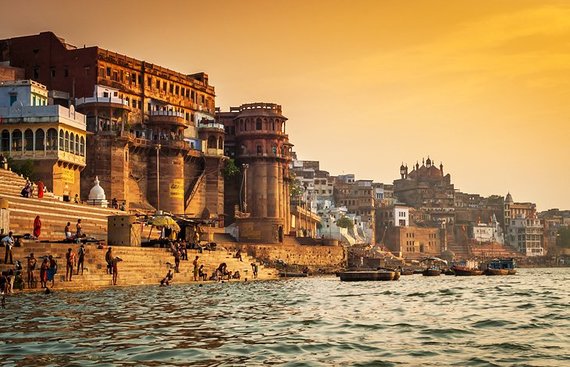Lesser-known Cultural Destinations to Explore

Globally, India is famous for its oldest civilizations with a kaleidoscopic variety and rich cultural heritage. When it comes to exploring the country, there are plenty of popular tourist spots to cover. As the 7th largest country globally, India stands distant from the rest of Asia, encircled as it is by mountains and the sea, which give the country an individual geographical entity. Surrounded by the Great Himalayas in the north, it widens southwards and, at the Tropic of Cancer, ebbs into the Indian Ocean between the Bay of Bengal on the east and the Arabian Sea on the west.
But have you ever looked for lesser-explored destinations? Don't you find that lesser popular places present the purity of the culture? Moreover, after being confined in the home range, a plan to travel has made travellers’ hearts grow. People find the plan as an opportunity to reconnect with loved ones. Exploring the world outside of the screen has become a requisite to sustain a normal lifestyle. Thoughts of re-living the joy only make us wonder how it'll go, and we are racking our brains to calm those nerves. Everyone wants the visit to be perfect, creating memories, something to reminiscence about later. Keeping this in mind, here is a list of lesser-explored cultural destinations for the entire family and friends to explore when it is safe to do so.
Karwar, Karnataka
![]()
Located between Goa and Karnataka is the cultural coastal town of Karwar. The city is famous for its quiet beaches, such as Karwar Beach and Rabindranath Tagore Beach. Its name comes from the nearby town of Kadwad, which means "the last area" in Konkani and Kannada. Surrounded by admiring natural scenery, fortresses, and ancient temples, the city of Karwar has been colonized by Portugal, France, Britain, Marathi emperors, and Muslim merchants who established their territory by sailing through the ports. Karwa is a paradise for people who wish to stay away from the urban population and immerse themselves in cultural heritage. In Karwar, travellers can also visit the Rock Stone Garden, the Warship Museum, Kurumgarde Island, and the Oyster Rock Lighthouse.
Dholavira, Gujarat
![]()
Enjoying ancient history always connects us with our roots. Dholavira is one of the right places to glorify Indian history. This lesser-known destination is established in Gujarat's Rann of Kutch, where visitors can adore an educational experience of India's ancient and mysterious past. Dholavira, also famous as Kotada Timba, is the only place that traced the existence of the Harappan culture from 2900 BC to 1500 BC. It is also the second-largest Harappan site in India and the fifth most prominent site in the Indian subcontinent. This antique town would surprise the visitors during exploration. An underground drainage system for sanitation, built by the inhabitants, has challenged the new-age innovation. In Dholavira, visitors can visit the Archaeological Museum and spend quality time at Kutch Fossil Park on the way back.
Majuli, Assam
![]()
Majuli, a large island on the Brahmaputra River, can be easily spotted from a distance. Known for its stunning view and unaffected tribal culture of the Missing, Deori, and Kachari tribes, Majuli is a verdant, unpolluted river island that welcomes visitors. Also known as the cultural capital of Assam, Majuli is home to the Sattriya culture and an Assamese pilgrimage island. It is distinguished by geography and culture, where the various ethnic groups in the region came from the spread of religious ideologies of Neo-Vaishnavism in the 15th century. During the visit to Majuli, explore the rich traditions of art and literature at the Vaishnavite Monasteries indulge in local Assamese Majuli thali and live in a bamboo hut for an authentic experience.
Unakoti, Tripura
![]()
The Unakoti Mountain in Tripura, dating from the 12th-16th century, famous for its massive stone and rock sculptures, is a must-visit for explorers prosperous in historic destinations. As per Hindu mythology, Lord Shiva once spent the night here on his way to Kashi. 99,99,999 gods and goddesses accompanied him, and he asked his supporters to wake up before dawn and head to Kashi. As no one was awake, Lord Shiva went to Kashgar alone, cursed the others, and turned them to stone. The incident has been named the site Unakoti, which means “one less than a crore.” The explorers can also find a 30-foot-tall Shiva head in Unakoti, called "Unakotiswara Kal Bhairava," which includes a 10-foot-tall embroidered headdress. In addition to cave figures of various gods, Unakoti is best defined as rock sculptures, frescoes, and natural waterfalls that explorers would look forward to.
Mokokchung, Nagaland
![]()
Situated at an altitude of 1,325 meters, Makokchung in Nagaland is famous for its exquisite tribal culture, handlooms, and Moatsu Festival. For the pleasure of a delightful climate over the year, travellers can live there for some days with the warm and local people of the Ao-Naga tribe. It is one of the oldest villages in Nagaland and has various clans residing here; they speak in a particular dialect of Monsen. To explore the local culture with friends and family, one can head to Mokokchung by taking a bus or car from the central city of Kohima. Considering the coming safe-time, one can also attend the Moatsu festival, celebrated to honour the creator of the Earth, where natives pray for a fruitful cultivation season.

